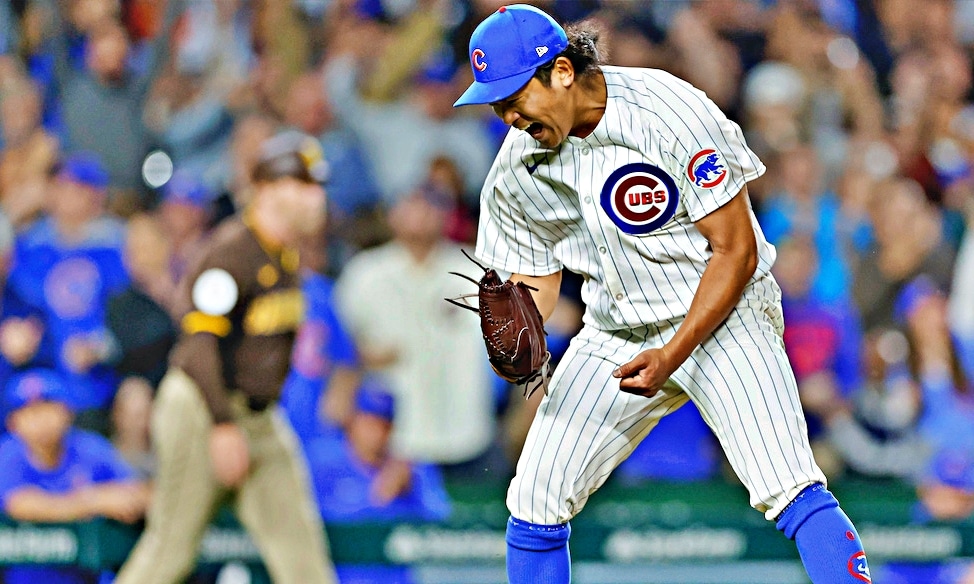
So far in the 2024 season, some have been waiting for Chicago Cubs pitcher Shota Imanaga to regress from his outstanding opening act in Major League Baseball.
They’re still waiting.
Imanaga had another solid showing in July and continued to pay early dividends on his four-year, $53 million contract. His performance and that of the Dodgers’ Shohei Ohtani highlighted the July efforts of the ten Japanese import players in MLB.
Outfielders Seiya Suzuki of the Cubs and Masataka Yoshida of the Boston Red Sox showed some spark in July after slow starts. Reliever Yuki Matsui of the San Diego Padres was again solid, while starter Kenta Maeda of Detroit had a difficult month. Starter Yusei Kikuchi of Toronto had an up-and-down July, as well, but still was a hot commodity on the trade market and ended up going to Houston.
Elsewhere, Yu Darvish of the Padres was moved from the Injured List to the Restricted List to deal with a family issue; Dodger starter Yoshinobu Yamamoto landed on the Injury List; and starter Kodai Senga of the New York Mets made his first appearance of the season, only to suffer a calf strain that may end his season early.
Shōta Imanaga
Imanaga continued to impress in July, showing no signs of regressing in his first MLB season.
He was 1-0 with a 2.55 ERA and 1.07 WHIP during the month, and his overall marks stand at 8-2, 2.95, and 1.07. He walked just three batters in 27 innings in July and is averaging just 1.4 walks per nine innings – a full run lower than his career average in Japan – and is averaging 9.1 strikeouts per nine innings, just slightly lower than his NPB figure of 9.4.
“He’s lived up to what everybody’s been talking about,” former Cub star pitcher Jon Lester said on July 21. “The Cubs got somebody special. As long as he stays healthy and keeps pitching for them, I think the sky’s the limit for him.
“To come and perform the first year, be an all-star, that’s just huge,” Lester added. “Because then you get settled in and you become comfortable. That’s a big thing when you come to a new team.”
Imanaga has pitched 109.2 innings so far in 2024, and it will be interesting to see if he exceeds his average of 141.2 during his time in NPB. His season high was 170 innings in 2019.
Shohei Ohtani
Ohtani had a number of highlights during July.
On July 7 against Milwaukee, he became only the third player in MLB history to have a home run, a triple and two walks, be hit by a pitch, and steal a base in one game. Only Christian Yelich of the Brewers in 2019 and Bert Daniels of the New York Highlanders (now Yankees) in 1910 had accomplished this previously.
On July 13, Ohtani hit a home run against the Detroit Tigers to become the first Japanese-born player to hit 200 homers in MLB. He then banged a three-run home run in the All-Star game and, a few days later, smashed a 473-foot home run with a 116.7 mph velocity against the Boston Red Sox at Dodger Stadium. That was his 30th round-tripper of the season, and the ball just missed going completely out of the ballpark.
“He just never ceases to amaze,” Dodgers manager Dave Roberts said. “I mean, you look at how far that ball went and how hot it came off the bat, it’s just hard to fathom someone hitting a baseball like that. He did say he got all of it. That’s just where people don’t go. Just really impressive.”
Ohtani hit .286 in July, with six home runs, 14 RBIs, and a 1.008 OPS. He also stole 12 bases in 14 attempts.
Overall, he’s averaging .309 – his best start since he came to MLB with the Los Angeles Angels in 2018 – with 32 home runs, 76 RBI, and a 1.028 OPS. After four months, he’s ahead of last year’s MVP-winning pace in batting average, hits, doubles, home runs, RBIs, total bases, stolen bases, and OPS+. His hard-hit rate and strikeout percentage – if they hold up the rest of the season – would be the best of his seven-year MLB career. His line-drive percentage is up, and his groundball percentage is down. And he’s just a shade lower than last season in on-base percentage and slugging percentage.
According to Baseball Reference, his 6.0 WAR figure equals his career best and is the best in the National League and sixth-best in MLB. He ranks second in MLB in home runs, slugging percentage, and OPS, third in on-base percentage, fourth in batting average, and fifth in stolen bases.
Seiya Suzuki
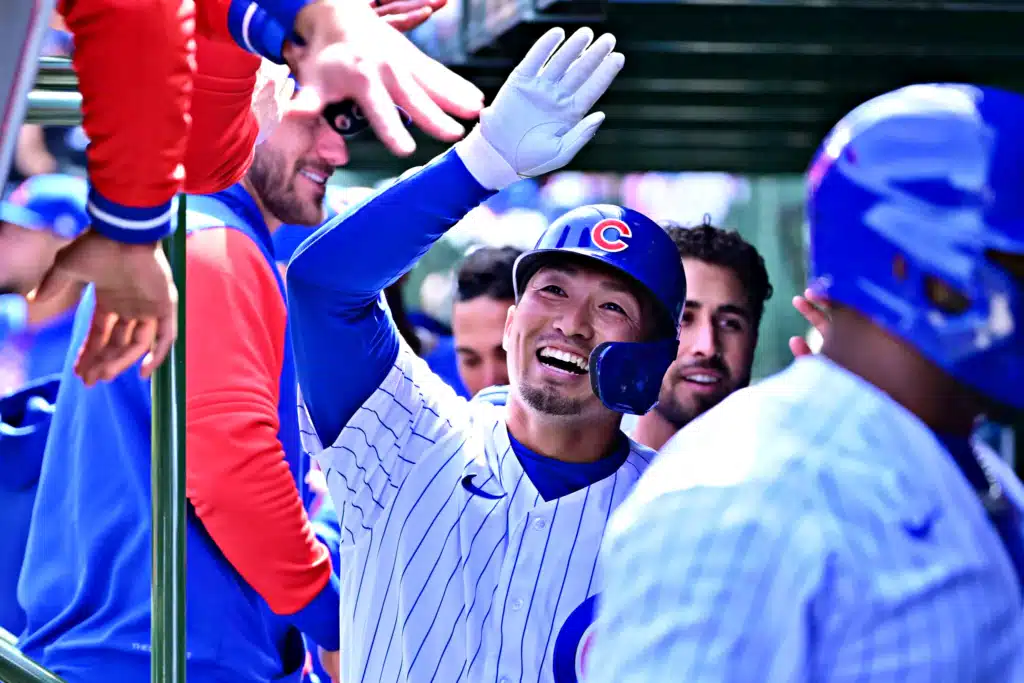
Suzuki heated up in July, averaging .299 with a .922 OPS, five home runs, and 21 RBIs. He had a hot streak at the end of the month, going 10-27 in his last seven games. He also had an on-base percentage of .376, his second-best monthly performance in that category.
For the season, his numbers are a .270 batting average, a .343 OPB, and a .482 slugging mark. He has hit 15 home runs and driven in 52 runs.
During his nine-season career in Japan’s Nippon Professional Baseball (NPB), he was noted for making consistent contact and getting on base often. He had a .402 career on-base percentage in Japan, but his corresponding mark in two-and-a-half seasons with the Cubs is .347. In Japan, he struck out in 18 percent of his at-bats. With the Cubs, the figure is 27.4 percent.
Suzuki is in the third year of a five-year, $85 million contract he signed prior to the 2022 season.
Masataka Yoshida
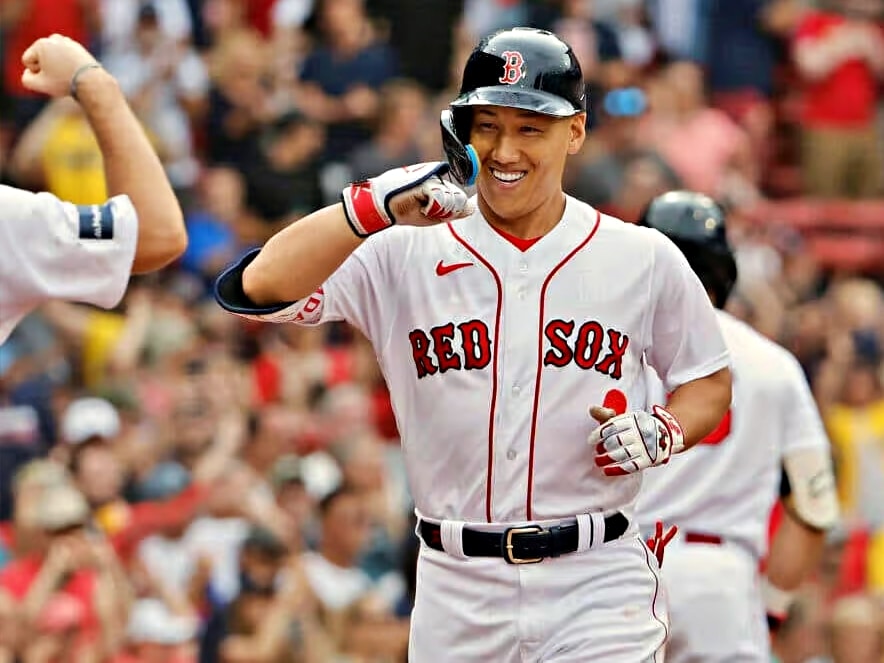
For much of 2024, Yoshida hadn’t been what the Red Sox needed, but he perked up in July with a .333 batting average and .898 OPS. He was 12-30 in his final eight games of the month, a .400 mark during that stretch.
“That swing, I was like, ‘This guy, he was pretty good in Japan; he was good for us the first part of the season last year. If this continues, it should be fun,’” Red Sox manager Alex Cora said after Yoshida homered against the Seattle Mariners.
“I think the swing is getting to the point that he’s hitting the ball hard all the time. He stayed with the breaking ball for the base hit. That was a great swing. You see it in BP now. The exit velocity…it’s like 100 (mph) all the time and the ball is carrying again. It has that backspin. So whatever he did mechanically, it’s helping. He’s healthy. That’s the most important thing.”
Yoshida has been a slow starter for much of his career, first in Japan and now in MLB, so it’s possible that his production could continue increasing as the season goes along. But with the Red Sox having a surfeit of outfielders, along with the fact that Yoshida’s defense was sub-par in 2023, he’s been having to adjust to being mostly a designated hitter. After playing 713 innings in left field in 2023, he’s played just one inning there this season.
Signed to a five-year, $90 million contract before last season – which more than a few observers thought was an overpayment – Yoshida has yet to pay dividends.
Yuki Matsui
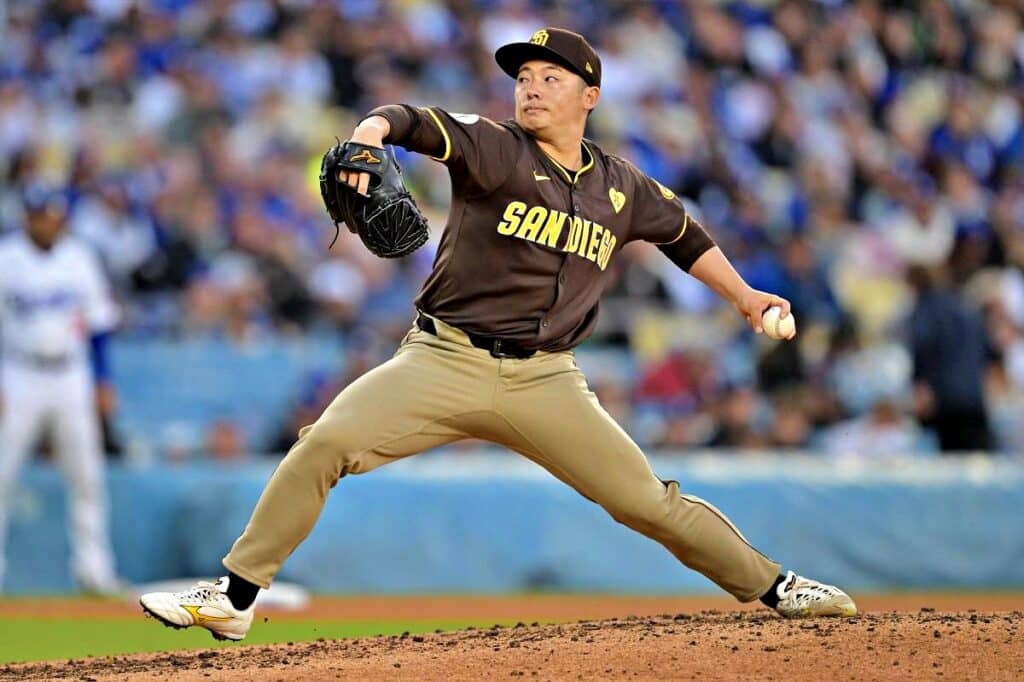
Matsui, a 28-year-old in his first MLB season, has been solid for the Padres in the regular season.
In nine July appearances totaling 9.1 innings, he allowed three runs on eight hits and had an 0.96 WHIP.
At the end of July, Matsui stands at 3-2 with a 3.38 earned-run mark. He’s given up just two home runs and only 32 hits in 45.1 innings, although his walk rate is quite high at 4.6/9 innings. A lefthander, he’s nonetheless been tough on righthanded hitters, allowing them just a .200 average, the same as lefthanded hitters.
Though Matsui was a closer in Japan, he’s been used almost entirely in setup situations with the Padres. He was put into the closer role against Kansas City on June 2 when regular closer Robert Suarez was not available and gave up three runs as the Padres lost 4-3. Matsui has actually finished seven other games, but he either entered those either with the Padres losing or winning by a large margin, eliminating save situations.
Yusei Kikuchi
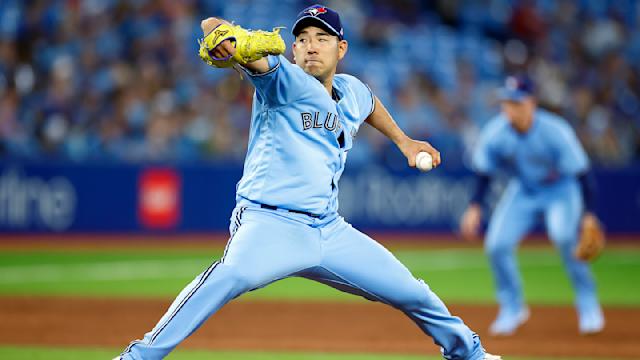
After quite a bit of trade speculation, Kikuchi was indeed dealt to the Houston Astros on July 29 for pitcher Jake Bloss, infielder Will Wagner and outfielder Joey Loperfido. Though Kikuchi stumbled after a good first two months of the season, he is clearly still valued. His hit rate per nine innings of 9.7 is the second-highest of his MLB career, but his strikeout rate (10.1/9) is higher than his career mark, and his walks and home runs allowed rates – 2.3/9 and 1.3/9, respectively – are lower.
Through the first two months of the 2024 season, the 33-year-old Kikuchi continued the improvement he’d exhibited in 2023, but he’s posted earned-run marks of 6.26 and 6.59 in June and July, respectively. Those cover 11 starts and 54.1 innings. Overall, he is 4-9 with a 4.75 ERA and 1.34 WHIP. He was 0-4 with a 7.75 ERA and 1.57 WHIP in his last eight starts.
In June, Jim Bowden of The Athletic surveyed more than 35 MLB executives and compiled a list of the players most likely to be dealt by the upcoming trade deadline. Kikuchi was on the list, and his name kept coming up in trade talk.
The eventual deal was expensive for the Astros, especially since Kikuchi will be a free agent after the season, but they needed help in their starting rotation as they battle Seattle for the American League West title.
Kenta Maeda
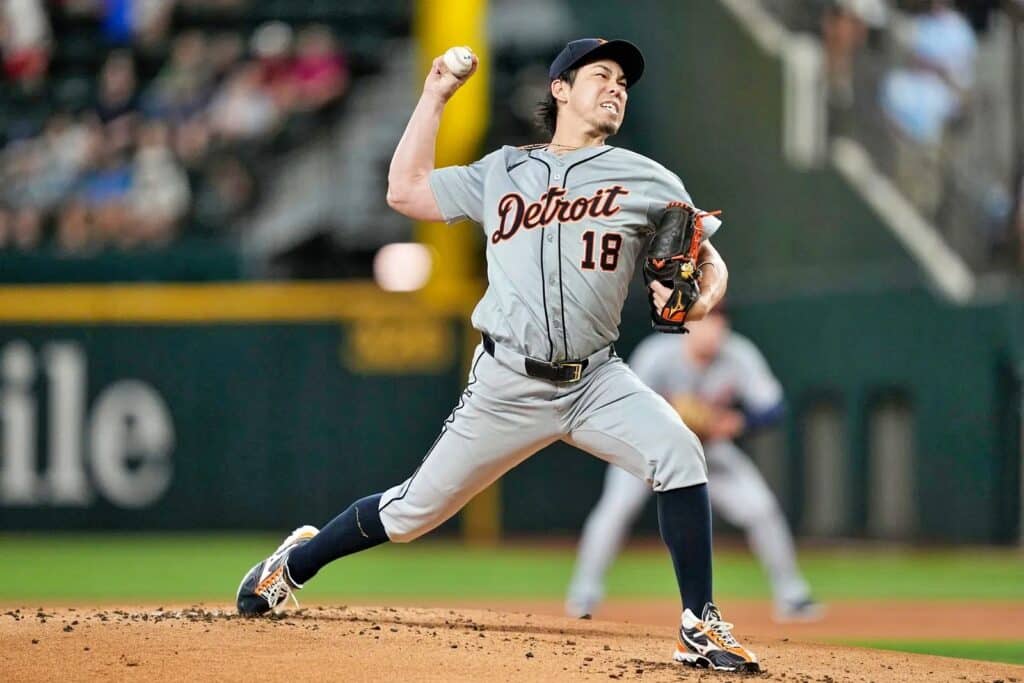
The 35-year-old Maeda signed a two-year, $24 million deal with Detroit in the off-season but has not produced as the Tigers had hoped and was moved from a starting role to the bullpen in mid-July. He has since allowed eight hits and four runs in 10.2 innings.
“He’s going to go to the bullpen for the foreseeable future,” manager A.J. Hinch said in announcing the move Thursday morning. “We have some adjustments we’d like him to make. He’s open to any and all ideas.”
Maeda showed flashes in May but spent time on the Injured List in May because of a viral illness and has not often been effective since. He posted a 10.06 earned-run average in five July starts covering 17 innings. During that time, he allowed 25 hits and four home runs.
He did reach a milestone on June 5 when he started against Texas, marking the 200th appearance of his MLB career, making him the 12th Japan-born pitcher to reach that level.
Overall, Maeda is 2-5 with a 6.72 earned-run average and 1.48 WHIP. His home runs-allowed rate (1.9 per nine innings) is the highest of his career; his walk rate of 2.9/9 is one of the highest of his career; and his strikeout rate (7.1/9) is by far the lowest.
Yoshinobu Yamamoto
In the first year of a 12-year, $325 million contract, Yamamoto has mostly been effective, but he hit a bump in the road when he went on the Injured List on June 16. He had left his start against Kansas City the day before with what was first believed to be tightness in his right triceps, but it later was diagnosed as a rotator cuff strain.
Manager Dave Roberts said the MRI exam did not reveal any tears in the rotator cuff, but there is currently no timetable for Yamamoto’s return to action, though a late-July report said that he had begun a throwing program and was nearing his first bullpen session.
“It’s one of those things where you want to do what’s best for Yoshinobu and make sure he’s healthy now and also in the long term,” Roberts said. “That’s the priority.”
The Dodgers had been letting him start every sixth or seventh day, as he did in Japan, and he was handling the transition well. His statistics remain good, even including his disastrous first start against the Padres in Korea.
In two June starts, plus the shortened outing against Kansas City, he allowed just 10 hits and one run in 15 innings. For the season, he’s averaging 10.2 strikeouts, 7.5 hits, 2.1 walks, and 0.7 home runs per nine innings – all outstanding marks. Opposing batters are averaging just .221 with an on-base percentage of only .266 and a .357 slugging percentage. For the season, he is 6-2 with a 2.92 ERA, and his FIP (fielding independent pitching) mark is an excellent 2.67.
Yu Darvish
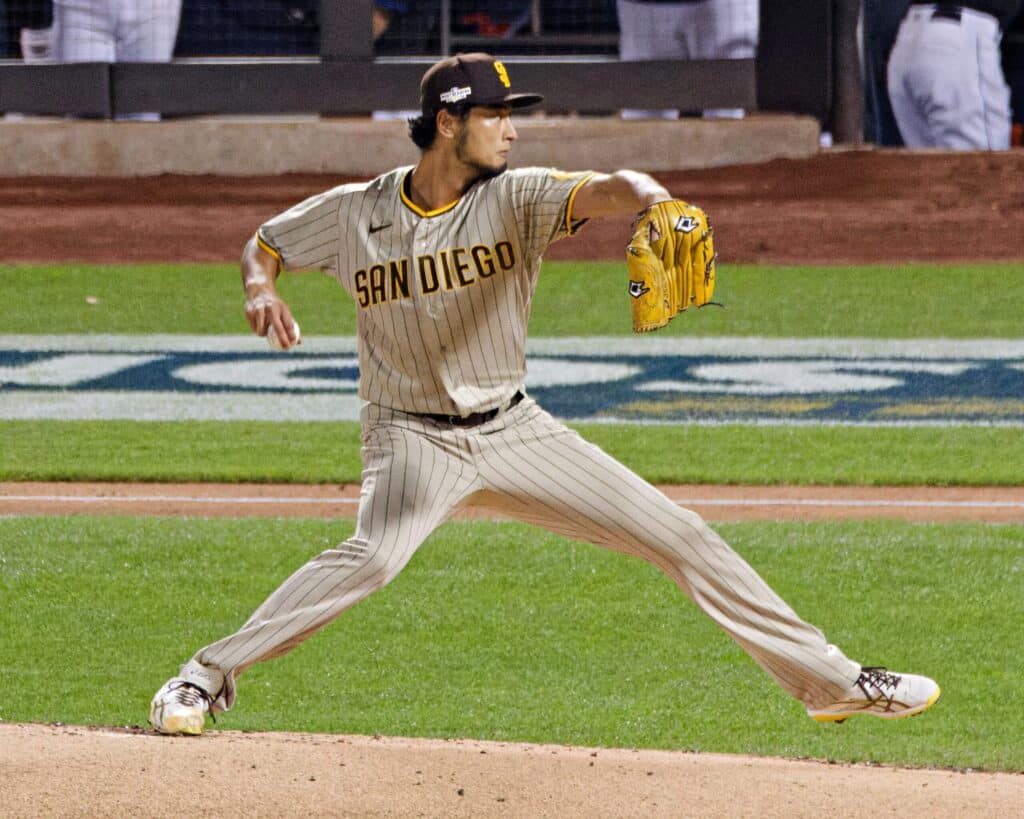
After undergoing a minimally-invasive arthroscopic debridement in his pitching elbow during the offseason, Darvish had a reasonably good, if inconsistent April, and followed that with a very solid May. But he has had injury trouble and hasn’t pitched since May 29.
He spent 15 days on the Injured List in April because of “neck tightness” and then went back to the IL in early June because of a groin strain. He had been scheduled to come off the IL on June 25, but his return was delayed because of inflammation in his right (pitching) elbow. Then, on July 6, he was placed on the restricted list. Padres manager Mike Shildt said that Darvish is dealing with “a personal matter involving his family.”
Darvish is 4-3 with a 3.20 ERA and 1.07 WHIP this season. He is allowing 2.4 walks per nine innings, which, if continued throughout the season, would be the second-best mark of his career. He has not pitched since May 29.
He did have an interesting interaction with a fan while at a local Home Depot, though. The fan saw him there and requested an autograph. And what did Darvish sign? – a paint-mixing stick.
Kodai Senga
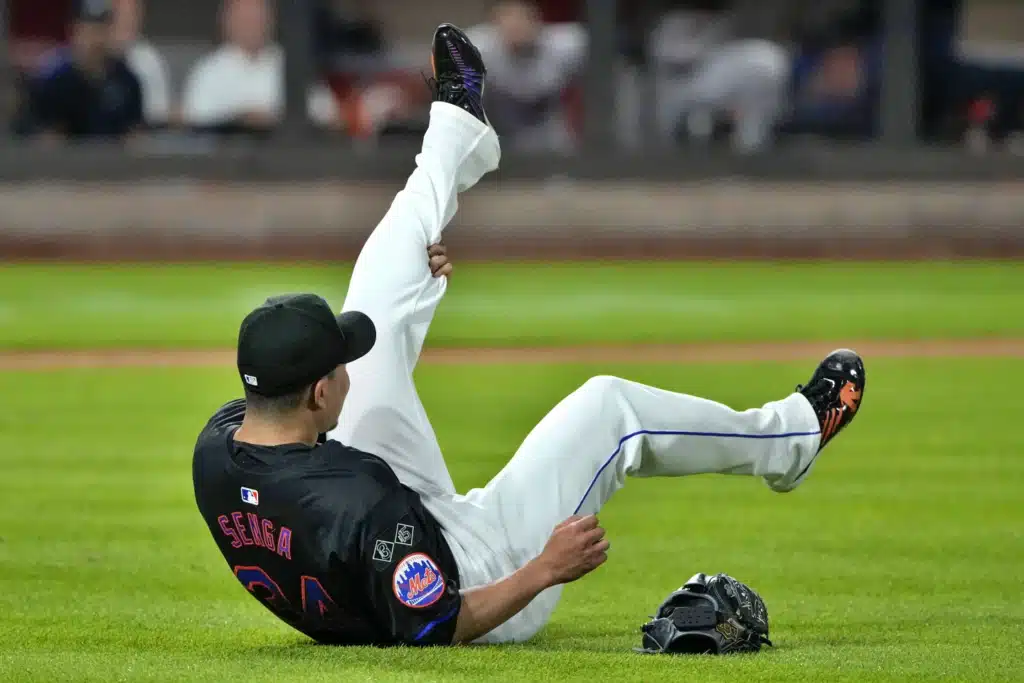
Without a doubt, it’s been a lost season for Senga.
He suffered a setback early in spring training when he was diagnosed with a moderate right posterior capsule strain and received a platelet-rich plasma (PRP) injection. He was eventually placed on the 60-day IL. His return had been delayed by mechanical issues and a triceps issue, and he did not make his season debut until July 26 against Atlanta.
The debut – and quite possibly his season – lasted 5.1 innings.
He had been effective, allowing just two hits and two runs. But while getting out of the way of an infield popup in the sixth inning, he suffered what was described as a high-grade calf strain and will most likely miss the rest of the season.
“It’s a huge blow,” Mets manager Carlos Mendoza said. “It sucks for him, all of us. He goes out there, has a game like that and goes out that way, it sucks.”
In 2023, the first of a five-year, $75 million deal, Senga posted a 2.98 ERA with 202 strikeouts in 166 1/3 innings. He was named an All-Star, placed second in the National League Rookie of the Year voting, and finished seventh in NL Cy Young voting. The Mets had expected him to be a big part of the rotation as they tried to rebound from a disappointing 2023.
This also affects Senga’s contract situation, as he needs to pitch at least 400 innings from 2023-2025 to be able to opt out of his deal at the end of the 2025 season. He is now all but certain not to reach that figure, with just the 166.2 innings from last season. He would have to throw 228 more innings, and no one threw more than 216 in 2023. Not reaching the 400 mark would mean that Senga would be under team control through at least 2027 at $15 million per season.
NOTES: A couple of interesting reads on the blog site of Robert Whiting, author of “You Gotta Have Wa” and other books about baseball in Japan (subscription required). In a July 2 posting, Whiting ruminates on the future of Chiba Lotte Marines’ young ace pitcher Roki Sasaki – will he be posted and have a shot at going to MLB after this season, or not? In a posting two days later, Whiting discusses the risks of signing him now, at age 22. He quotes Ira Stevens, an MLB consultant on Japanese baseball, as saying, “I have told MLB teams in the past, based on the overuse and over throwing experienced by NPB pitchers in Japan (and especially in HS), you can expect that sometime, if they are able to make the jump and play in the MLB, that they will have at least some kind of major arm issue and spend time on the DL (disabled list).” So far this season, Sasaki is 5-2 with a 1.96 ERA and 70 strikeouts in 59.2 innings. Stay tuned . . . Rintaro Sasaki, the high-school phenom in Japan who opted to play at Stanford University instead of going through the NPB draft, played 26 games for Trenton in the MLB Draft League and batted .221 with a .783 OPS, four home runs, and 17 RBI. He then moved to Greeneville in the Appalachian League, where, in nine games, he’s hitting .391 with three home runs, eight RBI, and a 1.508 OPS. . . . Righthanded reliever Naoyuki Uwasawa, who signed a minor-league contract in the off-season with the Tampa Bay Rays after nine seasons with the NPB’s Nippon Ham Fighters, was traded to Boston on March 28 for cash and immediately assigned to the Red Sox’ AAA Worcester, MA, affiliate. There, he is 4-3 with a 6.84 ERA and WHIP of 1.685. He’s made 15 appearances, six of them starts . . . Reliever Shintaro Fujinami was a late-spring demotion by the Mets. Sent to AAA Syracuse, his command issues continued, with 17 walks in 7.2 innings and a 14.09 ERA. He bounced between the Mets’ Class A team in Port St. Lucie (FL), the Mets’ team in the Florida Complex League, and their AA affiliate in Binghamton, NY. He pitched a total of four innings for those clubs. On June 5, he was placed on the 60-day Injured List because of a shoulder strain. Then, on July 26, the Mets designated him for assignment and then sent outright to Syracuse.

